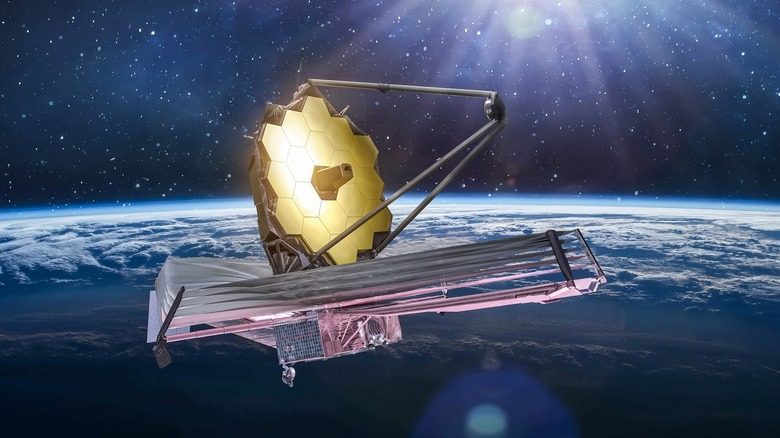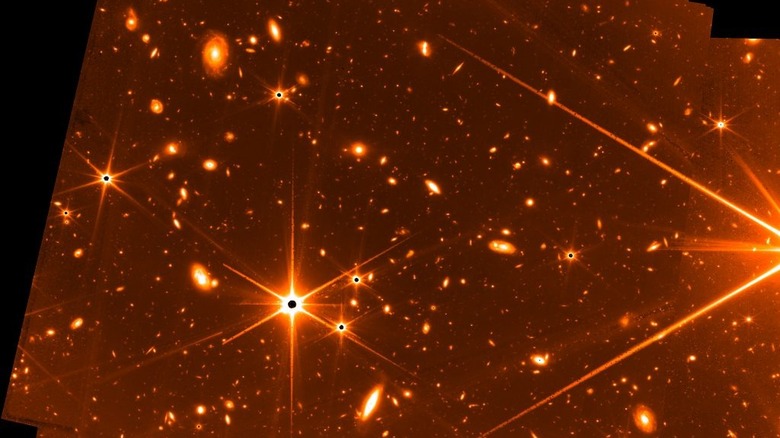James Webb Telescope Test Image Gives A Breathtaking Taste Of What's To Come
The astronomy world is giddily awaiting the release date of the first science images from the James Webb Space Telescope, humanity's most powerful space telescope, scheduled for July 12. Launched in December 2021, the telescope has entered its orbit around the sun, has deployed its hardware including a tennis-court-sized sunshield, and has had its four instruments aligned and calibrated. Now, NASA has shared a teaser about what to expect when the first science images are released with a preview of data from the Fine Guidance Sensor (FGS) instrument.
The FGS instrument is paired with the Near InfraRed Imager and Slitless Spectrograph (NIRISS) instrument to allow the telescope to point in exactly the right direction so the spectrograph can collect its data (via NASA). The FGS sends data to the telescope's attitude control system so it can orient itself correctly, and was also used during instrument commissioning and calibration to make sure the other instruments were accurately aligned (via NASASpaceFlight).
As part of its functions, FGS captures images. These aren't generally intended to be used for science or released to the public as they are intended for use with the process of aligning companion instrument measurements. There is only a limited amount of bandwidth for sending data from Webb to Earth which is usually reserved for the highest quality scientific data, but during Webb's commissioning phase, the team realized that they had a bit of bandwidth to spare. So they decided to collect images from FGS to see what they had (via NASA).
Bonus image from Webb
The researchers collected 72 exposures from FGS over 32 hours and combined them into this image which shows stars in the foreground and a sea of bright galaxies in the background. Although the image is, as NASA describes, "rough-around-the-edges," with diffraction spikes of stars caused by Webb's primary mirror segments and an uneven shape because of the different exposures, it is one of the deepest views of the universe yet captured. The very high sensitivity of the instrument allows it to see galaxies even if they are very far away.
The image was captured in the infrared wavelength, as this is the wavelength in which all of Webb's instruments operate, and the FGS specifically took data for this image in the 0.6 to 5 micrometer range. The FGS doesn't capture images in color, so the red-orange appearance is a false-color effect: white objects are the brightest, then orange, then red (via NASA).
The image shows just how detailed the Webb images are expected to be when they are released, and gives a hint at the kinds of science that the telescope will enable, such as looking back at some of the earliest galaxies in the universe. It would appear that image data from the FGS may be useful beyond its primary intended function.
"When this image was taken, I was thrilled to clearly see all the detailed structure in these faint galaxies," said one of the FGS scientists, Neil Rowlands, of Honeywell Aerospace. "Given what we now know is possible with deep broad-band guider images, perhaps such images, taken in parallel with other observations where feasible, could prove scientifically useful in the future."

